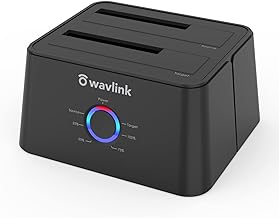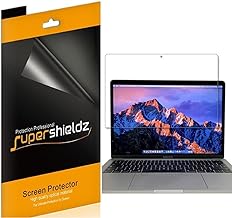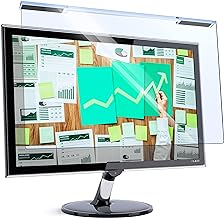5 important factors worth considering when looking for the best touchscreen monitor for raspberry
When looking to buy a touchscreen monitor for Raspberry Pi, there are important factors to consider for a good experience. You need to carefully review features like display quality, how well the touch screen works, what devices it can connect to, and how easy it is to use. Knowing what you need for this type of device is key to picking the right touchscreen monitor, so you can make a smart choice that works well and is easy to use.
See our guide to the best touchscreen monitor for raspberry.
Size and resolution of the touchscreen
Choosing a touchscreen monitor for your Raspberry Pi project is important for a good user experience. The size and resolution of the monitor both matter. The size should fit your workspace well. A bigger screen gives more space for multitasking or projects, while a smaller one is easier to move around. Higher resolution displays show clearer and sharper visuals, making the computing experience more immersive. It’s important to find a balance between size and resolution that works for your needs.
A big touchscreen monitor with high resolution can improve your Raspberry Pi setup, providing a clear and engaging interface for your projects. The sharp details and vibrant colors on a high-resolution screen can make browsing, coding, or watching media more enjoyable. However, a smaller touchscreen with lower resolution might be enough for simple tasks or when portability is important. Deciding between size and resolution depends on your personal preferences, budget, and how you plan to use your Raspberry Pi. By considering these factors, you can make a decision that enhances your overall user experience.
Touch sensitivity and accuracy
When choosing a touchscreen monitor for your Raspberry Pi, it’s important to prioritize smooth interaction and accuracy. Touch sensitivity can enhance your user experience, making it easy to navigate and quickly execute commands. Having precise touch input translates to better productivity and functionality.
Investing in a touchscreen monitor with superior touch sensitivity and accuracy can greatly improve how you work on Raspberry Pi projects. This can make it easier to be creative and come up with new ideas.
Good touch sensitivity and accuracy are especially important for tasks that need precision, like graphic design or coding on your Raspberry Pi. Being able to make precise gestures or commands can improve how you work and make your creative process smoother.
Choosing a touchscreen monitor that values touch sensitivity and accuracy doesn’t just make your Raspberry Pi easier to use. It also opens up new opportunities for projects and lets you explore your abilities. In the world of Raspberry Pi enthusiasts, where creativity and practicality are key, a top-notch touchscreen monitor can change the game and help you reach new heights.
Connectivity options (HDMI, USB, etc.)
When you’re choosing a touchscreen monitor for your Raspberry Pi, the different ways you can connect it are really important for how easy it is to use. There are a few options like HDMI and USB, and each one can make a big difference in how well your setup works. If you pick HDMI, you’ll get really clear visuals that look great, which is perfect if you want to show off your Raspberry Pi projects. Using USB is handy because you can easily connect other devices to your monitor, making it simple to add extra functions.
It’s crucial to think about compatibility and how easy the connections are to use when you’re deciding on a touchscreen monitor for your Raspberry Pi. By thinking about what you need for your projects and how you plan to use the monitor, you can pick one that fits your needs. Whether you care most about speed, efficiency, or flexibility, using the right connection type can take your Raspberry Pi setup to the next level, making it an easy and efficient hub for your creative ideas.
Compatibility with Raspberry Pi models
Choosing the right touchscreen monitor for your Raspberry Pi is important for improving your user experience. It’s not just about making sure the monitor fits physically, but also that it works well with your Raspberry Pi for the best performance. Getting a high-quality touchscreen monitor that is made to work smoothly with your specific Raspberry Pi model can make your computing experience more interactive and efficient.
Technology is always changing, and there are many different Raspberry Pi models out there. That’s why it’s crucial to do your research to find a touchscreen monitor that matches your needs. Considering things like screen size, resolution, touch sensitivity, and how it connects can help you pick a monitor that goes well with your Raspberry Pi. By focusing on compatibility and functionality when buying a touchscreen monitor for your Raspberry Pi, you can open up new possibilities and create a personalized computing setup that suits your preferences and goals.
Price and budget constraints
When you’re looking to buy a touchscreen monitor for your Raspberry Pi, it’s important to think about your budget. Prices for these monitors can vary a lot based on what features and quality you want. While it might be tempting to go for the cheapest option, skimping on display resolution, responsiveness, or overall quality could leave you unhappy in the end. You need to find a balance between cost and value to make sure you’re getting a good investment that meets your needs without spending too much.
Think about how you’ll use the monitor and any future plans you have for your Raspberry Pi when deciding how much to spend. It’s worth it to pay a little more for a high-quality monitor now to avoid having to replace or fix it often later on. Look for monitors that offer good performance, durability, and a reasonable price, knowing that good quality usually costs more. Focus on what you really need and what you want to accomplish in the long run instead of trying to save money in the short term. By doing this, you can get the most out of your Raspberry Pi setup and have a great touchscreen experience without regretting your budget choices.
Conclusion
Choosing a touchscreen monitor for your Raspberry Pi can make things a lot easier and more exciting for tech lovers and professionals. With this setup, you can improve your projects, work efficiency, and overall computer experience. The combination of the Raspberry Pi’s power and the user-friendly touchscreen interface allows for endless creativity and innovation. This monitor is versatile and can be customized to suit different needs. It symbolizes adaptability and functionality in the ever-changing tech world, allowing users to explore and customize their digital projects in new ways. Want more info on celtic salt organic, check the best celtic salt organic.


